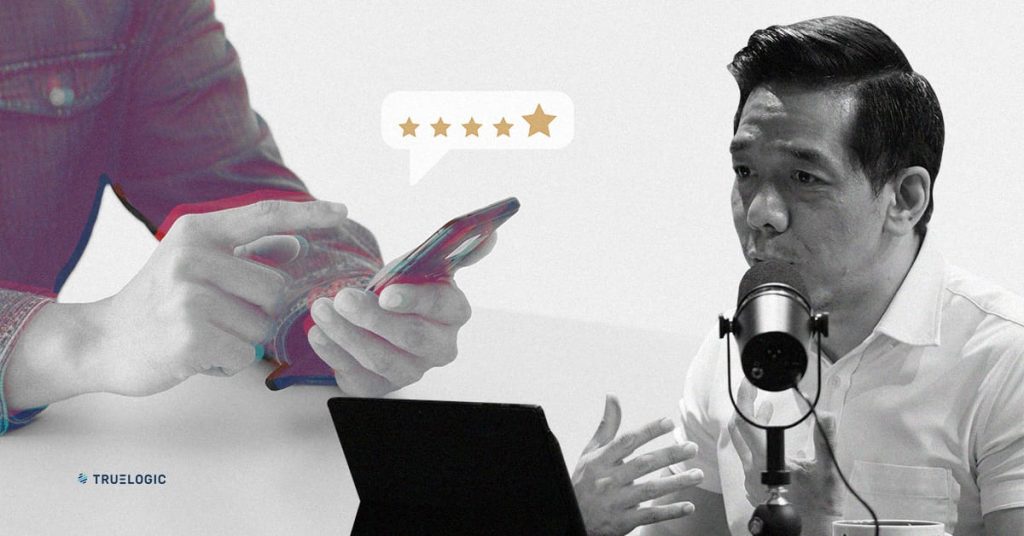Price, quality, accessibility, and variety—this is the traditional marketing mix all brands aspire to get right to attract the right customers who are ready to make a purchase. Or at least it was, until the Internet opened up a brand new world of selling and competition.

Most of these elements remain relevant to businesses that have branched out online, but with one important addition to the bag: reviews. For brands that have gone digital, customer reviews are more visible than ever thanks to open and shared platforms that easily publish them. And because reviews come directly from real customers that have experienced a brand firsthand, it puts reviews in a unique place that builds credibility better than other digital marketing tools can. Online, reviews are king; they hold so much power in swaying a customer’s likelihood to buy in the right direction.
It’s easy to assume that only positive reviews are the goal—on the contrary. Negative reviews, though a double-edged sword, have their place in a healthy digital marketing mix, too. They serve purposes that cannot be replicated by other marketing strategies and therefore, require brands to learn how to carefully position them to turn something bad into good.
Undoubtedly, it’s a problem for brands if they’re consistently disliked by customers. The thing is, it’s also a bad thing if they only get positive reviews. Just as we can evaluate people as “too good to be true,” the same can be said for brands.
Customers that do their research about products and services being sold online—and expect that they will do their research—are turned off if all they encounter are praises and compliments. It’s instinctive for customers to expect that brands sometimes fail, make mistakes, or displease customers one way or another. When they see this aspect missing from the picture, their minds quickly go to one place: this brand could be hiding the truth about the quality of their stuff and are intentionally manipulating buyers into believing that they’re the best there is.
Brands that believe showing off positive reviews without the other side of the coin are misguided. This is one sway to erode customer trust and instead sow doubt, albeit unintentionally. Being transparent is still the way to go when cultivating credibility online. So, as a rule of thumb, balance the kind of reviews you get and publicize; highlighting positive reviews is a given, but be reminded never to deny the criticism some people have made of you at the same time.
Negative reviews as an effective filtration system
Another goal of digital marketing is to find the right audience to cater to. There are several techniques to accomplish this, but negative reviews are often underutilized in the process. Here’s how that works:
Negative reviews don’t automatically mean a brand’s products or services are terrible. They could provide insight into who the brand is not for. People who don’t have their needs met by a brand could simply be the wrong audience. It could be rewarding for brands to study the profiles of buyers they didn’t satisfy. By doing so, they can redirect their efforts to reaching the audience that liked what they offered, or in other words, strengthen their appeal to everyone else that reviewed them positively. This is a good example of how positive and negative reviews can work together to achieve the same target.
Discovering, then fixing, what doesn’t work
The only way to know if products and services truly work is to give them to the people who need them. If they’re well-received, congratulations! Your brand has done well.
But if they don’t and customers find weak points, don’t consider this a failure. Treat it as the best way to fix what needs fixing. Listen to your customers because in the end, it isn’t up to you to say that you’ve perfected your offerings; it’s always up to the end user. If you expect them to make purchases from your brand, give them something to rave about and keep coming back to.
Keeping things visible
As mentioned earlier, don’t delete, or hide negative reviews. Keep them in a place where customers can read about them just as easily as they can access positive reviews. Display good and bad reviews side by side and be real about not always getting things right.
Respond, respond, respond
Never forget that reviews are a great way to openly engage with customers and build long-term relationships with them. Negative reviews give you a chance to apologize, ask questions, and find timely solutions. In short, it’s your chance to show you care and let everyone know this. Brands that respond publicly to bad reviews communicate their willingness to improve and that they give importance to customer experience. By doing this, you’re telling everyone you’re not just there to make a sale, but want to do the best you can for people that give you their money.
A chance to say “Thank you”
Very few brands thank customers for positive reviews submitted online. It’s memorable when they do, but it’s even more impressive when they do the same in response to negative reviews. Doing so catches the negative reviewer off guard, as it’s normal to expect defensiveness or a cold response from someone you criticize. But when brands accept criticism fairly—and even, warmly— a negative reviewer can even give your brand a second chance and, in the best-case scenario, recant their review.
In the end, it’s clear—with some practice, brands can take the bad and turn them into something good!
If you’re interested in learning more about Online Reputation Management, we have two episodes in our Truelogic DX Podcast that can help you. Subscribe on Spotify, Apple, or Google Podcasts. Webinar episodes are free to watch on Truelogic Inc. YouTube Channel.




Recent Comments